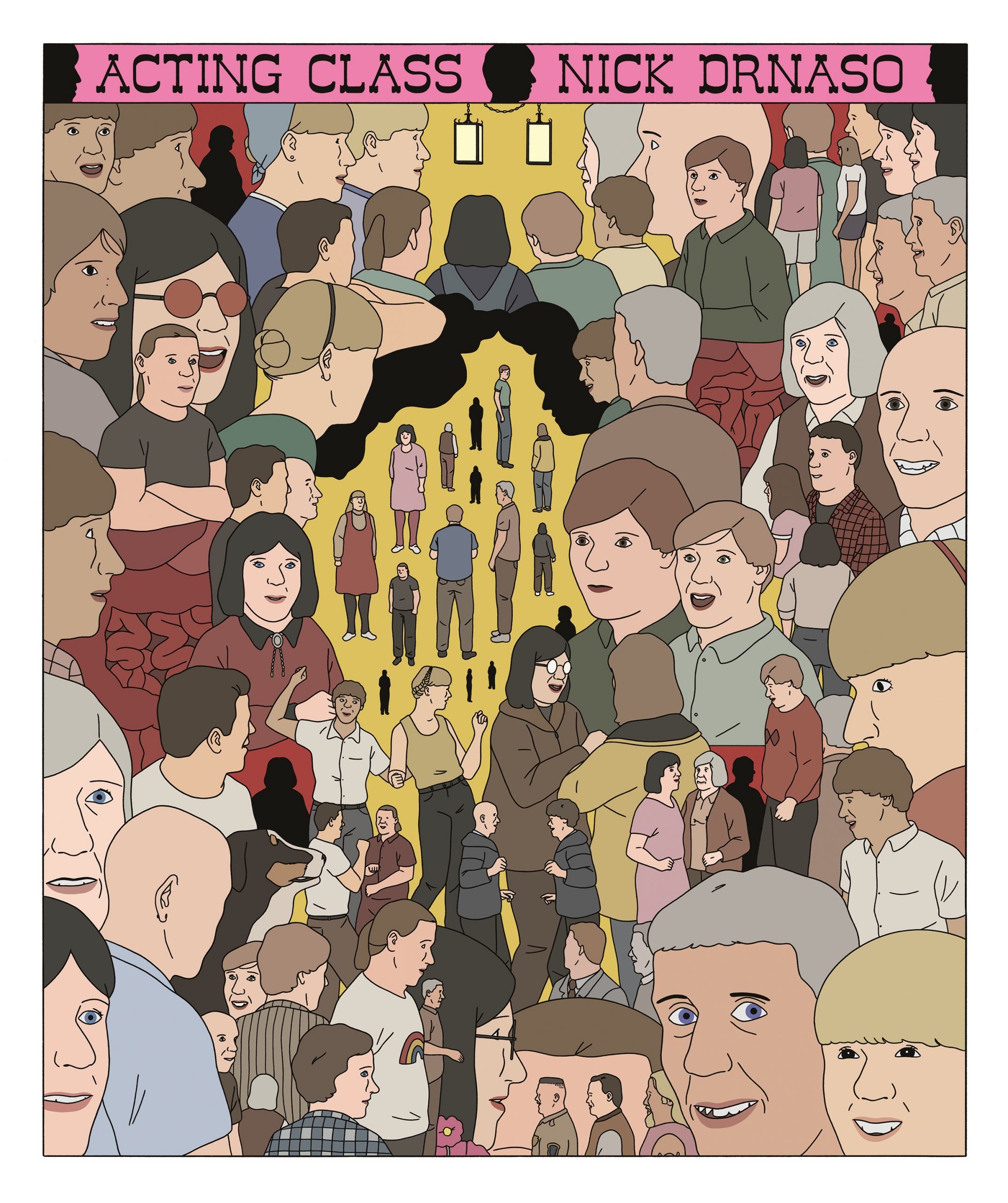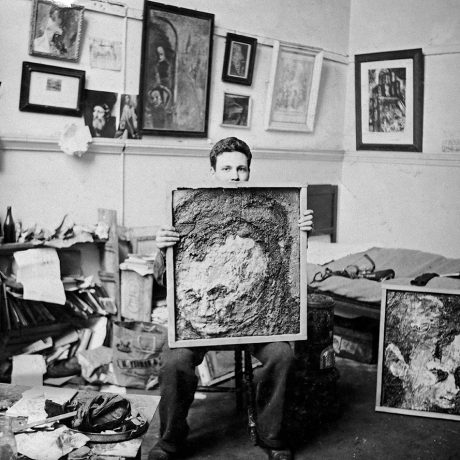
The American graphic novelist Nick Drnaso, best known for the 2018 Man Booker Prize-nominated Sabrina
, recently released his much-anticipated follow up. Titled Acting Class, the 264-page compendium is a compelling examination of human identity analogised through the story of ten strangers attending an acting class.
Drnaso is no stranger to telling a good story, as seen through his 2016 debut Beverly not to mention the esteemed Sabrina. The latter narrates the murder of the eponymous character and ensuing conspiracy theories. But in Acting Class, the graphic novelist takes his craft one step further, stretching his muscles in an innovative exploration of how real life meets imagination in this multi-perspective, gripping volume.
What starts out as a seemingly straightforward plot line gradually unfolds into a tale which pokes at the characters’ deepest introspective workings. The uncoverings are predominantly unearthed by the acting class’ instructor, the eery yet enigmatic John Smith who sets unconventional acting exercises which send the ten main characters on their respective journeys of self-discovery.
“We become part of a dreamlike plot which bows in and out of reality and imagination”
Along the way, Drnaso brings us close to the ten participants. Rayanne, for example, is an anxious, overprotective mother whose son shows worrying signs of mental health issues. Neil is a rehabilitating ex-con struggling to integrate back into society and battling with anger issues. Rosie and Dennis are a married couple attempting to spice up their relationship with impromptu acting prompts. Each character is at a different stage in their life and facing their own challenges, but loneliness is a plight felt by all. One that ensures they repeatedly return to the acting class in the hopes of finding answers.
Living on the outskirts of society, each of the ten participants enrol in the acting class as a way to examine their relationship with mainstream society. Manipulation and distrust reoccur throughout, much of it at the hands of Smith who tows the line between inspirational cult leader and ascetic provocateur. As the acting classes become increasingly demanding (both emotionally and physically), each character is pushed to the limit, forced to confront their innermost fears and desires, before facing the consequences of their actions.
“Each character is pushed to the limit, forced to confront their innermost fears and desires, before facing the consequences of their actions”
Drnaso’s visual style is understated, with muted brown and green backgrounds giving the panels a diagrammatic feel, like cartoon stills from a richly-plotted soap opera. While the style bears the same signature characteristics of the author’s previous works (large swathes of flat block colours outlined with crisp black lines for clarity), Acting Class is a distinct departure from Sabrina. The illustrations possess a depth of emotion not previously found in Drnaso’s work, specifically seen through the embellishment of facial intricacies which only add to the characters’ nuanced emotions and the story at hand.
Previously, Drnaso has used minimal line gestures for facial features. In some cases, eradicating whole features to gesture ambivalence. Drnaso’s use here of the third-person point of view makes the viewer feel as if they are observing the action from behind a screen. In Acting Class, however, the reader’s point of view is directed at the character’s eye line. The viewer takes up the position of the character. We see what they would see as this immersive trick pulls us deeper into the story. We become part of a dreamlike plot which bows in and out of reality and imagination.
Throughout Acting Class, the subtlety of human expression is conveyed through the rhythmic back-and-forth of first-person conversation. Drnaso pays particular attention to how his characters express nuance; through a minute turn at the corner of the mouth or a kink in the eyebrow. The graphic novel also marks the first time Drnaso injects colour into his characters’ lips and eyes; a tangible marker for how the author’s technique in character building has improved. Not to mention a testament to his ability to breathe more life into still, two-dimensional character illustration.
“The graphic novelist takes his craft one step further, stretching his muscles in an innovative exploration of how real life meets imagination”
In one pivotal scene, Smith tasks the group with expressing a different version of themselves in a party scenario. Drnaso transports us to the imagined setting, realising the exercise by swapping the class’s four walls for the house where the event takes place. When one person is challenged to act like a dog, Drnaso keeps them in this state for the remainder of the book and the character is restricted to talking in barks for the rest of the novel.
Such creative devices allow Drnaso to create an impressively uncomfortable atmosphere where the boundary between reality and imagination becomes less defined and, more importantly, irrelevant. It allows the characters’ new personae to breathe and gather momentum, allowing the reader to ultimately decide what is real and what is not.
Drnaso’s artful graphic storytelling creates a purposefully untrustworthy relationship between image and text, where the reality of the visuals and text don’t quite align. It’s a powerful commentary on how we choose to present ourselves outwardly in contrast to what we feel on the inside.
Jyni Ong is a London-based freelance writer
Acting Class by Nick Drnaso is out now (Drawn & Quarterly)






